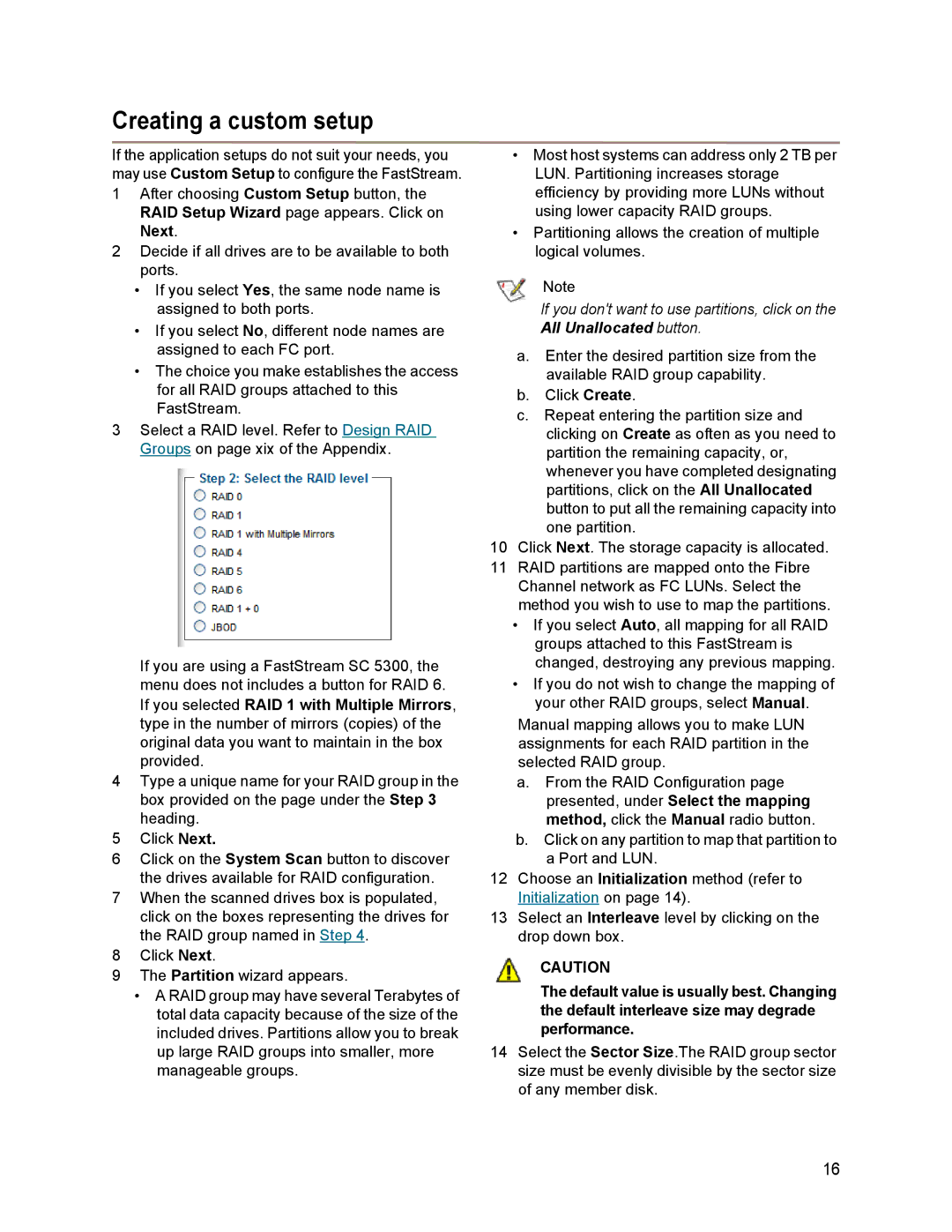
Creating a custom setup
If the application setups do not suit your needs, you may use Custom Setup to configure the FastStream.
1After choosing Custom Setup button, the RAID Setup Wizard page appears. Click on Next.
2Decide if all drives are to be available to both ports.
•If you select Yes, the same node name is assigned to both ports.
•If you select No, different node names are assigned to each FC port.
•The choice you make establishes the access for all RAID groups attached to this FastStream.
3Select a RAID level. Refer to Design RAID Groups on page xix of the Appendix.
If you are using a FastStream SC 5300, the menu does not includes a button for RAID 6. If you selected RAID 1 with Multiple Mirrors, type in the number of mirrors (copies) of the original data you want to maintain in the box provided.
4Type a unique name for your RAID group in the box provided on the page under the Step 3 heading.
5Click Next.
6Click on the System Scan button to discover the drives available for RAID configuration.
7When the scanned drives box is populated, click on the boxes representing the drives for the RAID group named in Step 4.
8Click Next.
9The Partition wizard appears.
•A RAID group may have several Terabytes of total data capacity because of the size of the included drives. Partitions allow you to break up large RAID groups into smaller, more manageable groups.
•Most host systems can address only 2 TB per LUN. Partitioning increases storage efficiency by providing more LUNs without using lower capacity RAID groups.
•Partitioning allows the creation of multiple logical volumes.
Note
If you don't want to use partitions, click on the All Unallocated button.
a.Enter the desired partition size from the available RAID group capability.
b.Click Create.
c.Repeat entering the partition size and clicking on Create as often as you need to partition the remaining capacity, or, whenever you have completed designating partitions, click on the All Unallocated button to put all the remaining capacity into one partition.
10Click Next. The storage capacity is allocated.
11RAID partitions are mapped onto the Fibre Channel network as FC LUNs. Select the method you wish to use to map the partitions.
•If you select Auto, all mapping for all RAID groups attached to this FastStream is changed, destroying any previous mapping.
•If you do not wish to change the mapping of your other RAID groups, select Manual.
Manual mapping allows you to make LUN assignments for each RAID partition in the selected RAID group.
a.From the RAID Configuration page presented, under Select the mapping method, click the Manual radio button.
b.Click on any partition to map that partition to a Port and LUN.
12Choose an Initialization method (refer to Initialization on page 14).
13Select an Interleave level by clicking on the drop down box.
CAUTION
The default value is usually best. Changing the default interleave size may degrade performance.
14Select the Sector Size.The RAID group sector size must be evenly divisible by the sector size of any member disk.
16
